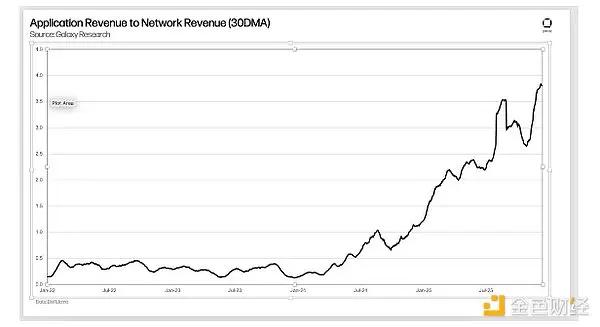Key Highlights
- The market cycle of Bitcoin reflects a growth trend: Despite the high market volatility, the price movement of Bitcoin is mainly influenced by the inflow of institutional funds, macroeconomic factors, and regulatory policies, such as the market surge on December 4, 2024, which highlights the market resilience of Bitcoin.
- Spot Bitcoin ETF drives institutional adoption: The approval of spot Bitcoin ETFs has released a large amount of new capital, not only reshaping market liquidity and price trends, but also further enhancing the legitimacy of Bitcoin in the eyes of traditional investors.
- Market liquidity and trading dynamics depend on stablecoins and exchange fund flows: USDT plays a key role in the Bitcoin trading ecosystem, while the flow of funds between exchanges reflects the immediate sentiment of traders and market positioning.
- On-chain data and macroeconomic factors influence the future of Bitcoin: Bitcoin network activity indicators (BNI), scaling solutions, regulatory policies, and the global economic environment will continue to impact the long-term adoption and price trends of Bitcoin.

In the past decade, Bitcoin has grown from a niche digital experiment to a mainstream financial asset. This rise has been driven primarily by a surge in investor demand, rapid technological development, and the need for an alternative to the traditional monetary system. However, Bitcoin's growth path has been accompanied by violent price increases and deep corrections, including market volatility in early 2025.
- Unprecedented surge in demand (e.g., the market explosion on December 4, 2024)
- How spot Bitcoin ETFs are changing the institutional investment landscape
- Patterns of fund flows between exchanges, providing insights into trader behavior
- Stablecoins (particularly Tether's USDT) as a pillar of market liquidity
- On-chain indicators, such as the Bitcoin Network Activity Index (BNI)
This article will connect these factors to present a complete perspective, analyzing Bitcoin's price trends, changes in liquidity, and market adoption, and why they have been so volatile.
Table of Contents
Bitcoin Market Volatility in 2025: Correction After a Strong Start
December 4, 2024: A Historic Surge in Demand
- Unprecedented trading volume
- Key drivers of the surge in demand
- Impact on Bitcoin's liquidity and market maturity
Spot Bitcoin ETFs: Unlocking a Flood of Institutional Capital
- Differences between spot ETFs and futures ETFs
- Inflow of institutional funds and market impact
- Psychological and structural changes in Bitcoin adoption
Inter-Exchange Fund Flows: Deciphering Trader Dynamics
- How traders move Bitcoin between platforms
- Fund flows between spot exchanges vs. derivative exchanges
Case study: Market reaction to ETF approvals
Stablecoins as a Market Pillar: The Rise of USDT
- The role of USDT in liquidity and trading
- Market impact and growing adoption
- Controversies and regulatory scrutiny
Bitcoin Network Activity Index (BNI): A Snapshot of On-Chain Health
- Key metrics: active addresses, transaction volume, and fees
- How BNI reflects market sentiment
- Limitations of BNI and supplementary data indicators
How Internal and External Factors Influence Bitcoin's Development
- Protocol upgrades and scaling solutions
- Miner behavior and its impact on the market
- Macrotrends: monetary policy, regulation, and global stability
Outlook and Potential Catalysts
Bitcoin Market Volatility in 2025: Correction After a Strong Start
In early 2025, the price trend of Bitcoin reflected the impact of institutional fund flows, macroeconomic trends, and regulatory policies, with a significant correction following the establishment of new highs.
Bitcoin Price Movements (January to March 2025)
- January 2025: Opening price $93,576, reached a new all-time high of $109,500 on January 20, and closed at $102,260 (+9.3%).
- February 2025: Price dropped 17.6%, the largest monthly decline since June 2022, closing at $78,310, primarily due to a slowdown in institutional capital inflows.
- March 2025 (as of March 6): Rebounded to $94,000, driven by market optimism about regulatory policies.

Spot Bitcoin: BTC/USDT Spot
Key Drivers of Bitcoin's Price Movements in Early 2025
Institutional Profit-Taking and ETF Impact
- The January increase was primarily driven by inflows of capital into spot Bitcoin ETFs.
- The February decline reflected institutional profit-taking, leading to a pullback in Bitcoin prices.
Macroeconomic and Regulatory Uncertainty
- Speculation around US monetary policy and crypto regulations led to a more cautious market sentiment.
- Inflation concerns dampened the performance of risk assets, including Bitcoin.
Retail Market Reaction and Recovery
- Retail investors re-entered the market after the February price drop, driving the March rebound.
- The recovery trend indicates continued confidence in Bitcoin's long-term potential.
Why is this important?
The market volatility of Bitcoin in early 2025 continued the trends seen in late 2024, particularly the surge in demand on December 4, 2024. Institutional investment, macroeconomic pressures, and regulatory policy uncertainty remain core factors influencing the market.
December 4, 2024: A Historic Surge in Demand
In Bitcoin's recent history, December 4, 2024, marked an unprecedented surge in trading demand. On that day, the single-day trading volume reached 279,000 BTC, far exceeding the peak trading volumes of previous bull markets. This event highlighted Bitcoin's appeal to both retail and institutional investors, while also demonstrating its ability to capture global attention and market impact.

Image Credit: CryptoQuant
Key Drivers of Surging Demand
Optimistic Regulatory Expectations
The US presidential election results suggest that the new administration may have a more friendly attitude towards crypto. The market generally expects the new government to promote a more relaxed crypto policy, and this optimism has attracted risk-averse funds and small and medium-sized investors to quickly enter the market.
Macroeconomic Pressures
Persistent inflation concerns and economic uncertainty have led many investors to view Bitcoin as a safe-haven asset, further driving its "digital gold" narrative. This has led to a flow of funds from traditional safe-haven assets to Bitcoin, exacerbating the influx of funds into the market.
Retail FOMO (Fear of Missing Out)
With the surge in Bitcoin prices, a large amount of retail capital has poured in to avoid "missing the opportunity". The push from social media and crypto KOLs has further amplified the market heat, ultimately leading to a near-vertical rise in prices and trading volumes.
Why is this important?
This day's demand peak is an important stress test of Bitcoin's liquidity. Exchanges need to cope with record trading volumes, and the market's maturity has clearly improved compared to past bull markets.
Technological upgrades (such as scaling solutions) have played a key role in helping the network cope with high transaction volume demands.
The combination of institutional and retail enthusiasm has made December 4, 2024 a key moment for understanding Bitcoin's potential and volatility.
Spot Bitcoin ETF: Unleashing a Flood of Institutional Capital
For years, institutions have shown growing interest in Bitcoin, but the US approval of a spot Bitcoin ETF in January 2024 has officially ushered in a new era of massive institutional capital inflows.
Differences between Spot ETF and Futures ETF
– Spot ETFs directly hold real Bitcoin and reflect the real-time market price. In contrast, futures ETFs track the price of Bitcoin contracts, which may lead to "roll costs" and price deviations.
– Spot ETFs lower the investment threshold, allowing large funds, pension plans, and even ordinary investors to participate without having to manage private keys or directly use crypto exchanges.
Record-Breaking Daily Purchase Volumes
– In November 2024, the spot ETF's single-day purchase of Bitcoin reached a total of 18,000 BTC, a milestone indicating that a large amount of new capital is pouring into the market.
– Asset management giants like BlackRock and Fidelity are actively competing for market share, continuously purchasing Bitcoin through ETFs. This further reduces the circulating supply on exchanges, boosting the momentum of Bitcoin price appreciation.

Image Credit: BitBo
Psychological and Market Impacts
– Prominent financial institutions holding real Bitcoin makes BTC more legitimate in the eyes of skeptics.
– ETF capital inflows are often accompanied by a reduction in Bitcoin supply on exchanges, which may further drive up prices when demand rises.
Today, the spot ETF has become an important tool for the mainstream adoption of Bitcoin, successfully connecting Wall Street capital with the crypto ecosystem.
Trader Dynamics: Inter-exchange Capital Flows
While the capital inflow of the spot Bitcoin ETF reflects the long-term investment interest of institutions, the Inter-exchange Flow Pulse (IFP) provides insights into the immediate market sentiment, revealing how retail and institutional investors are shifting Bitcoin between different platforms.
How IFP Works
– Spot Exchanges (Coinbase, Kraken): Provide direct services to buy and sell Bitcoin using fiat or stablecoins.
– Derivative Exchanges (Binance Futures, Bybit, XT.COM): Offer leveraged trading, such as futures, swaps, and options.
When Bitcoin flows in large quantities from the spot market to the derivatives market (e.g., the BTC/USDT contract), it usually means that traders are seeking leveraged returns or hedging market volatility. Conversely, when capital flows back from the derivatives market to the spot exchanges, it typically represents profit-taking or exiting high-risk positions.
Case Study: January 2024
– After the first spot Bitcoin ETF was approved, Bitcoin prices surged significantly. Many traders were concerned about a "sell-the-news" event, so they shifted funds from the derivatives market back to the spot market or stablecoins.
– Over-the-counter (OTC) institutions also reported a significant increase in BTC buying and selling activity, reflecting that some institutional investors prefer to trade through the OTC market to reduce market impact and protect transaction privacy.

Image Credit: CryptoQuan
How IFP Helps Interpret the Market
Inter-exchange capital flows can serve as a key indicator of short-term market sentiment, while ETF capital inflows primarily reflect the long-term investment trends of Bitcoin.
Stablecoins as Market Pillars: The Rise of USDT
With the surge in Bitcoin trading volume, stablecoins have become the primary trading medium and liquidity management tool in the market. Among them, Tether (USDT) is the most influential stablecoin, with its supply surpassing 110 billion tokens in early 2025, solidifying its market-leading position.

Image Credit: TradingView
Why is USDT So Dominant?
Hedging Market Volatility
Traders can quickly convert BTC (or other cryptocurrencies) to USDT during periods of severe market price fluctuations, without having to return to the traditional banking system, thereby reducing trading risks.
Widespread Trading Pair Support
On most centralized exchanges (CEXs), USDT supports almost all cryptocurrency trading pairs, providing low spreads and high liquidity, improving trading efficiency.
Global Accessibility
In markets with unstable currencies or strict capital controls, USDT serves as a borderless store of value and is even used as a convenient cross-border payment method.
Controversies and Resilience
– Tether has long been subject to regulatory scrutiny due to concerns over the transparency of its reserves, and has even been fined for making false claims about its 1:1 asset backing.
– However, USDT's network effects continue to expand, and its deep integration with exchanges has allowed its market application to continue growing.
How do Stablecoins Support the Crypto Market?
Stablecoins represented by Tether effectively connect the traditional financial and crypto markets, providing fast capital flows, further strengthening the Bitcoin trading ecosystem.
Bitcoin Network Activity Index (BNI): A Snapshot of On-Chain Health
In addition to market capital flows and liquidity, on-chain data can reveal the actual usage of the Bitcoin network. The Bitcoin Network Activity Index (BNI) consolidates various key data metrics, including:
– Active Addresses: The number of unique addresses sending or receiving BTC.
– Transaction Counts: Higher transaction volumes usually indicate increased speculative activity or user interest.
– Block Size & Mempool: A larger mempool indicates transaction backlog and network congestion; block size can measure the network's processing efficiency during peak transaction periods.
– Transaction Fees: Rising fees may reflect strong market demand, but can also burden users relying on low-cost transactions.

Image Credit: CryptoQuant
Why is BNI Important?
– Bullish Indicator: Historical data shows that when active addresses and daily transaction volume surge, it often coincides with a bullish market phase, representing new capital and user inflow.
– Limitations: BNI cannot fully predict price trends, as external events like regulatory crackdowns or institutional announcements can change market trends, exceeding the influence of on-chain metrics.
How Can BNI Help Market Analysis?
BNI provides specific data on the network's daily usage, and when combined with exchange inflows, stablecoin issuance, and macroeconomic data, it can construct a more comprehensive market analysis perspective.
Internal and External Factors: Shaping Bitcoin's Development Trajectory
To fully understand Bitcoin's market performance, it's necessary to focus not only on internal technical developments, but also consider external macroeconomic and regulatory factors.
Internal Development Factors
Protocol Upgrades
Bitcoin is constantly evolving, with upgrades like Taproot and Schnorr signatures enhancing privacy, scalability, and smart contract capabilities. Additionally, Layer-2 solutions (such as the Lightning Network) improve transaction throughput, potentially unlocking more real-world use cases.
Miner Behavior
Miners directly impact block generation time, transaction fees, and overall network security. Miner migration due to changes in electricity costs or regulations can affect hash rate distribution, altering transaction confirmation speeds.

Image Credit: CryptoQuant
External Influencing Factors
Monetary Policy
– Loose monetary environments (such as low interest rates or quantitative easing) often encourage speculative capital inflows into Bitcoin.
– Tightening policies (like rate hikes or balance sheet reduction) may lead to capital flight from high-risk assets, including Bitcoin.
Regulatory Climate
– Countries supporting cryptocurrencies (such as the US approving a Bitcoin spot ETF) often promote institutional investment growth.
– Conversely, regulatory crackdowns or policy uncertainty may reduce local market demand and even force miners or exchanges to migrate.
Global Economic Stability
– Economic recessions, geopolitical conflicts, or currency devaluations often strengthen the narrative of Bitcoin as a "borderless store of value", attracting capital inflows.
Outlook and Potential Catalysts
Looking ahead, the Bitcoin market faces multiple development paths, shaped by both technological innovation and market risks:
Wider ETF Expansion
– Following the US approval of a Bitcoin spot ETF, Europe, Asia, and Latin America may follow suit, further unlocking institutional capital and driving global market growth.
Stablecoin Market Competition
– Other stablecoins (like USDC) or decentralized stablecoins (like DAI) may challenge Tether's (USDT) market dominance through stricter audits and regulatory compliance.
Scaling Solutions
– Wider adoption of Layer-2 networks and emerging sidechain technologies may make Bitcoin transactions faster, cheaper, and potentially turn Bitcoin into a more practical payment tool.
Regulatory Uncertainty
– Increasing scrutiny of mining carbon footprints, stablecoin reserves, and crypto exchange operations may create market uncertainty.
– Black swan events or macroeconomic shocks (such as a global recession or geopolitical risks) could still have sudden impacts on the market.
Despite these uncertainties, Bitcoin's decentralized protocol and growing global user base continue to attract capital and talent, ensuring it remains a market focus in the coming years.
Summary and Future Outlook
The complexity of the Bitcoin market becomes clearer through a multi-faceted analysis:
– The surge in transactions on December 4, 2024 demonstrates Bitcoin's ability to absorb massive demand, driven by a combination of institutional capital allocation, retail FOMO, and macroeconomic tailwinds.
– The launch of Bitcoin spot ETFs has opened new capital inflow channels, making it more accessible for investors from pension funds to regular traders.
– Inter-Exchange Flows provide real-time market sentiment analysis, helping identify traders' shifts between leveraged speculation and safe holding.
– Stablecoins (especially USDT) serve as the market's liquidity backbone, effectively connecting on-chain and off-chain capital flows.
– BNI (Bitcoin Network Index) and other on-chain metrics can measure the network's actual usage, complementing macroeconomic data and exchange flow analysis.
The evolution of Bitcoin continues, with each innovation or adjustment at the protocol level or in global monetary policies potentially impacting the market landscape. However, Bitcoin's core value lies in its adaptability, technological innovation, institutional adoption, and grassroots community support.
Whether Bitcoin reaches new highs or experiences market corrections, these market dynamics ensure it remains a central focus of the digital asset evolution.
Quick Links
– March Global Economic Calendar: Must-Read for Crypto Traders
– When Crypto Meets Music: XT.COM x Rolling Stone China's VIP Night at Consensus Hong Kong 2025
– Monad vs. Ethereum: Can This Emerging L1 Disrupt the Market?
– Hong Kong's Web3 Revolution: Key Trends & Regulatory Policies Unveiled at Consensus 2025
– Top 9 Crypto Narratives Shaping 2025: AI, DeFi, Tokenization, and More Innovations
- Established in 2018, XT.COM currently has over 7.8 million registered users, with over 1 million monthly active users, and a user traffic of over 40 million in its ecosystem. We are a comprehensive trading platform that supports over 800 high-quality crypto assets and 1,000+ trading pairs. XT.COM crypto exchange supports spot trading, margin trading, contract trading, and other diverse trading options. XT.COM also has a secure and reliable Non-Fungible Token (NFT) trading platform. We are committed to providing users with the most secure, efficient, and professional digital asset investment services.






